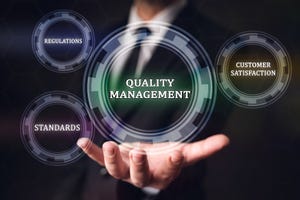Technology Scouting for Medtech in the Modern Age
Companies should have sound strategies in place to identify and vet potential technologies they are interested in acquiring.
March 2, 2018
It’s no secret that innovation is essential to a company’s ability to cultivate a robust product pipeline and consistently remain competitive in a global marketplace. Accessing this innovation through external technology acquisition is increasingly becoming viable for any organization.
Companies now have ready access to technologies developed around the globe, which offers significant opportunities to leverage the trials and tribulations of others to benefit their own product pipeline. However, even with the wealth of this technology data, it is critical to separate the reality from the hype. Sifting through endless technologies to find the best fit can be time consuming and inefficient unless firms have a process in place to identify and vet technologies.
Having a robust technology scouting and assessment process can mean the difference between success and failure when it comes to importing technology. Using a balanced scorecard approach to technology assessment has been proven to increase the chances in identifying and leveraging external technology.
Don't miss the Advanced Design and Manufacturing Conference and Expo in Cleveland, March 7-8, 2018.
A technology scouting and assessment process should include these elements:
Understanding the fundamental need the technology must address is a critical first step as it sets the foundation for identifying and vetting potential technologies. People often miss the fundamental need because they begin to offer solutions too soon and include them in their problem statement. One way to identify the root need is to use a method like the “5 Whys.”
Identifying technology classes and high-level qualitative screening criteria to weed out non-useful classes is essential. Focus efforts on identifying specific technologies and ranking them on more quantitative properties.
Developing a diverse technology assessment and identification team cannot be understated. The team must include people who can assess technologies both on business and technology aspects. Leaving out one could result in scenarios where there is a great technology fit that cannot be manufactured or a technology that meets cost and schedule criteria but is not able to technically perform in the envisioned use environments. Diversity is critical when searching for technologies as well. Looking for similar problems and solutions across other industries is a great way to identify technology options that may not yet exist in a specific industry.
Using scorecard assessments based on existing literature data are key to down-select to top-promising technologies, but not all properties will be known. This is where feasibility testing is used to better understand performance and implementation risk. Keep the testing simple and focused on retiring critical risk elements. Remember, if a technology is failing in feasibility, remove it from the list and move on.
Importing technology is a great way for companies to grow and improve their market share, but only if they can quickly and efficiently identify technologies that are a good fit for their product needs. Having a robust technology scouting and assessment process is a critical element for success.
About the Author(s)
You May Also Like


